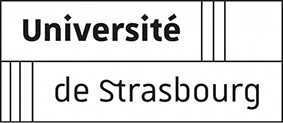By combining four different high-throughput sequencing approaches, IBMP researchers have identified the messenger RNA (mRNA) targets of DCP1-associated NYN domain endoribonuclease 1 (DNE1), an endoribonuclease involved in the regulation of gene expression and having an important function in the regularity of flower emergence, also known as phyllotaxis.
This study has led to a better understanding of how the action of DNE1 coordinates with that of factors activating the elimination of the cap, a modified nucleotide protecting the 5′ end of mRNAs from degradation. By studying plants combining mutations in DNE1 and other factors important for RNA degradation, the researchers identified certain characteristics whose presence is more frequent in RNAs targeted by DNE1. Cross-checking the data obtained by the four approaches used showed that the abolition of DNE1 action can have different consequences for its mRNA targets. Some of which showing altered steady state levels, while others varied in their ability to get converted into small interfering RNAs when cap hydrolysis is perturbed.
The study, led by Damien GARCIA, was published in the journal The Plant Cell. It is the result of work carried out in the RNA Degradation team (IBMP) by a PhD student, Aude Pouclet, in collaboration with David Pflieger, engineer at the Bioinformatic platform (IBMP). It led to the identification of a great diversity of DNE1 targets and improved our understanding of the action of DNE1 in mRNA degradation in plants. This is an essential step in determining how DNE1 influences plant physiology and the precise developmental patterns occurring during flower emergence.















